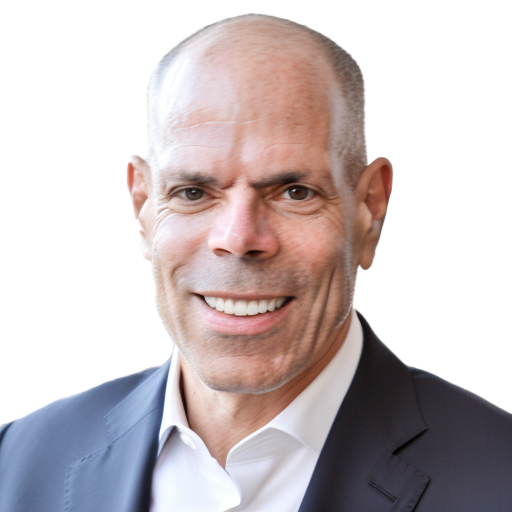
Small and medium-sized businesses need cybersecurity just as much as large enterprises. Unfortunately, smaller companies are even more vulnerable to attacks, and cybercriminals are targeting them more often. According to Small Business Trends Magazine, 43% of cyberattacks target small to medium-sized businesses, and roughly 60% of SMBs go out of business within six months after an attack.
One reason why small businesses are such easy targets is that they have sensitive information that hackers want, like employee records with social security numbers. Hackers can use this data for identity theft or fraud. SMBs also typically don’t invest as heavily in cybersecurity, leaving their networks vulnerable, and it’s easier for cybercriminals to break in.
However, businesses of all sizes can secure their digital assets using solid cybersecurity strategies. If you leave your network vulnerable, not only is your company’s sensitive data in danger, but you may also inadvertently put customers, employees, and vendors at risk. Cybercriminals are constantly evolving their techniques, and you must do the same to keep up.
Here are some solid strategies to keep your business safe.
Top Strategies in 2022 to Protect Your Business
The threat landscape for cybersecurity is ever-changing, and therefore you must have a diverse set of strategies to protect your company from all types of attacks. Bad actors use a variety of techniques to break into your network. Some examples are phishing attacks, social engineering, ransomware attacks, other types of malware, DoS attacks, Man-in-the-Middle, and brute force attacks. Some solid strategies to keep your entire company safe include:
Prioritize Cloud Security
To some degree, most companies now rely on cloud storage for data. Cloud storage offers companies great benefits like easy access, automatic synching, and offsite backups. However, the widespread use of cloud applications pose a significant danger of data breaches and theft. If you store company, customer, employee, or vendor data in the cloud, it could be accessed, changed, stolen, or deleted by hackers. It’s essential that you vet every cloud provider thoroughly and choose cloud services that offer the highest level of privacy and security.
Employee Training
Many data breaches result from employee error, often through phishing emails where a staff member clicks a malicious link that installs ransomware onto the network. If your staff is not trained to practice good cybersecurity, they can make your company vulnerable.
Cybersecurity training is essential for all employees throughout the organization, from top executives down to the latest new hire. Training staff to recognize threats and respond accordingly can save your company tremendously. Cover all the latest techniques and how to mitigate them and use specific examples of social engineering or phishing attacks during your training.
Network Security
Network security includes hardware devices and software that prevent unwanted intrusions. Secure your network with firewalls, a strong password policy, MFA (multi-factor authentication), and 24/7 network monitoring. You can also enhance your network security with VPNs that mask your IP address, hide all internet activity, and keep your real identity private. VPNs make it much harder for hackers to find you.
One of the most vulnerable areas of a corporate network is its Wi-Fi access. Restrict Wi-Fi access by MFA, strong passwords, and even IP addresses.
Software and Hardware Updates/Upgrades
As with most things, hardware and software age and require upgrades. Some hardware vendors offer firmware updates regularly to enhance security. Always install them as soon as you receive the alert. Likewise, update mobile devices with the latest operating system, security patches, and upgrades.
Hackers look for known vulnerabilities in software and hardware to exploit. The investment to upgrade hardware and software is worth not becoming the victim of a ransomware attack. Don’t overlook this critical cybersecurity practice.
Create a policy to regularly update all your software and hardware with the latest updates as soon as they become available. Everyone is busy but make the time to upgrade to protect your entire network.
Data Backups
In the event of a ransomware attack or other data loss, a good, solid backup is your best defense. Store some backups onsite for quick and easy restoration of files and other backups offsite, so you can protect your data if your entire network is compromised.
Access Limits
Threats don’t always come from outside. Protect your critical data assets from insider threats by limiting access to only those people who need it. Determine your most essential digital assets by taking an inventory and implementing a strict access policy to critical hardware, software, applications, and files. Keep sensitive data separate from online systems to protect against unwanted access or loss.
Security Culture Prioritization
Deputize your entire workforce as first responders to outsider threats. Empower your team to respond quickly and correctly to all cyber-attacks. Build a culture of cybersecurity where everyone is on board and cares about the company’s safety as much as you do.
Consider Cybersecurity-as-a-Service
Cybersecurity-as-a-Service (CSaaS) means outsourcing your cybersecurity to professionals who protect your digital assets and network against intrusion and data loss.
Cyberleaf CSaaS combines years of experience with best practices, top-notch professionals, and top-tier tools. They provide expertise, preparation, protection, detection, and rapid response and recovery.
Cyberleaf offers companies of any size top-level protection at an affordable price. Their services include data breach prevention, compliance, active threat mitigation, and advanced detection 24/7. The interface is easy-to-use, flexible, and adaptable and will grow with your company as the threat landscape changes. Cyberleaf is a trusted partner you can count on to keep your digital assets and network safe.
You don’t have to invest in heavy hardware changes; Cyberleaf’s fully integrated suite of tools works with your existing network. The modular as-a-service approach makes things flexible to work for any company, often tied into your existing cyber investments. Cyberleaf’s advanced tools and rich alerts mean you can implement top-tier cyber protection with your existing resources; there is no need to hire specialized IT staff to get top notch protection. Cyberleaf has done the hard work to integrate complete cyber protection, meaning you can set up company-wide cybersecurity in just a few days.
Interested in learning more about what to do next? Here’s how you can build a cybersecurity plan to protect your business from cyber threats.





